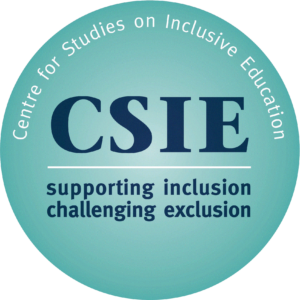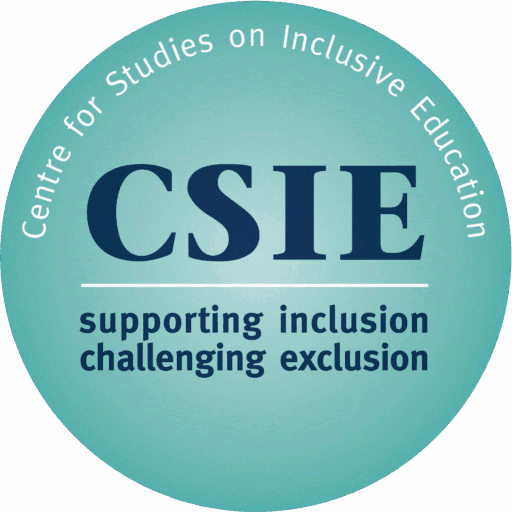At CSIE we carry out and share research to better understand how children, young people and adults experience education, and how these experiences affect their lives.
Our research follows strict ethical guidelines, as set out by the British Educational Research Association (BERA). We recognise that all research is influenced by the values of those who carry it out, so we are open and clear about our own approach. The strength of our work comes from the robustness of research design and the rigour in its application.
We also believe that conventional ways of representing research are sometimes hard to access, so we make a special effort to present findings in clear, engaging and accessible ways. By doing this, we believe our work can reach more people and have a greater impact.
School placement trends
CSIE has been reporting, since the 1980s, school placement trends of all local authorities in England (i.e. the proportion of children sent by each local authority to separate special schools within or outside the local authority’s boundaries). This detailed level of analysis, ranking of all local authorities from the one with the lowest to the one with the highest proportion of children in special schools, is unique to CSIE.
Work on the latest issue in this series, covering the years 2014-17, has now been completed with the help of a grant from the British Academy, to whom we remain grateful. We have, once again, worked in collaboration with researchers at the University of Exeter: Professor Brahm Norwich, Dr Alison Black and Dr Yi Liu (who has since moved to the University of Bristol). Findings of this research were presented at an open seminar in London in April 2019.
For the first time in the history of the Trends series, we are making the latest information freely available online: a report written by Dr Alison Black and Professor Brahm Norwich, and a web application developed by Dr Yi Liu which includes: a) an interactive map; b) detailed information on rates of segregation for each local authority; and c) lists of all local authorities arranged from the least to the most segregating for each of the years examined. A manual is also available to help users access the information on the web application.
By referring to rates of segregation, this research adopts terminology put forward by the UN Committee on the Rights of Persons with Disabilities. In its General Comment no. 4, the Committee explains how segregation, integration and inclusion should be understood, given that Article 24 (Education) of the UN Convention on the Rights of Persons with Disabilities requires the development of an inclusive education system at all levels. Segregation, which is not mentioned in Article 24, is defined as the education of disabled students in separate settings, isolated from non-disabled students. Integration, the Committee says, is the process of placing disabled students in existing mainstream institutions and expecting them to adjust to the requirements of these institutions. Inclusion, on the other hand, is the process of “systemic reform” involving changes in content, methods, approaches, structures and strategies in education, so that all students can have an equitable and participatory learning experience.
As has always been the case in the Trends series, this research is merely descriptive: it gives information on the proportion of pupils placed in different types of settings, without commenting on pupils’ experiences or attempting to explain the trends observed, both of which are beyond the remit of this research.
This research shows that there has been a rising national trend of special school placements over the last 10 years. Like other Trends reports before it, it also suggests a postcode lottery for inclusive education: there continues to be huge variation in the rates of segregation into special schools of children with Education and Health Care Plans. Some local authorities consistently rely more on mainstream settings, while others regularly send high proportions of children to special schools. In 2017 the proportion of children sent to special schools ranged from 0.18% (the equivalent of 1 child in every 552) in the London Borough of Newham, to 1.75% (the equivalent of 1 child in every 57) in Torbay. That is close to a tenfold difference! While there are small variations from year to year, these patterns remain relatively constant: most local authorities send to special schools roughly the same proportion of pupils from year to year.
Such significant differences between local authorities cannot easily be explained by the size or type of a local authority or by its social or geographical characteristics. Further research is needed in order to understand these diverse patterns.
Despite every local authority being subject to the same national policies and legislation, CSIE Trends reports keep bringing to light disturbing local variations. The significance of this research is twofold: up-to-date information can empower parents to make better informed choices for their children’s education, and it can help parents, professionals and others to lobby for change. Previous reports in the Trends series are available from CSIE.
Parental choice of school for disabled children
CSIE has conducted an online survey on choice of school for parents of disabled children and is currently seeking funds to process all responses and disseminate findings widely. The survey was conducted in November 2012 and received 690 responses, mostly from parents and carers of disabled children and young people, or those categorised as having special educational needs.
The government has promised a choice of mainstream or special school to parents of disabled children, or children who have a statement of special educational needs. CSIE’s survey sought to find out how much actual choice parents have, in different parts of the country, and how parents feel about the options available to them.
Findings from this research could have significant implications for the future of educational provision in England. The choice between an ordinary local school or a separate “special” school remains a contested issue and, following the coalition government’s initial pledge to “reverse the bias towards inclusion”, the Department for Education maintains that the decision should be a matter of parental choice. Anecdotal evidence, however, suggests that in some areas parents do not have a choice. This research will offer valuable insights into the amount and quality of options available to parents of disabled children in all nine English regions.
Community cohesion
Small-scale research project designed to identify key issues for promoting community cohesion in Bristol and South Gloucestershire.
This project was commissioned by the Black Development Agency as brokers for the Race Equality and Human Rights Services for Bristol and South Gloucestershire to support the development of a Community Cohesion Campaign for the two local authorities. The School of Education, UWE, Bristol working together with the Centre for Studies in Inclusive Education (CSIE) have been engaged in the work developed in close partnership with the commissioning bodies. The project runs from mid-November 2007 until the end of March 2008 and there will be a Community Cohesion Campaign Launch in the summer at BAWA, Southmead Road, Filton, which interested people are invited to attend.
To date the project has included a summary overview of the national and local policy initiatives in relation to community cohesion together with a review of the concept itself and how different groups have understood the term. There has been an online survey which attracted 120 responses from people across Bristol and South Gloucestershire. The project is currently engaged in two small scale case studies one based in Severn Ward, South Gloucestershire and a second in Easton, Bristol. This process has involved research assistants in giving out disposable cameras to young people, mothers and other community members and asking them to photograph places in their neighbourhood where local people can meet. The photos have acted as a stimulus for interaction with young people, mothers and other community members through one-to-one interviews or meeting together in a focus group in each of the two localities.
At the moment the data from these case studies are still being collected and it is intended that this will form the basis of the recommendations to be shared at the Community Cohesion Campaign Launch Conference in the summer.


